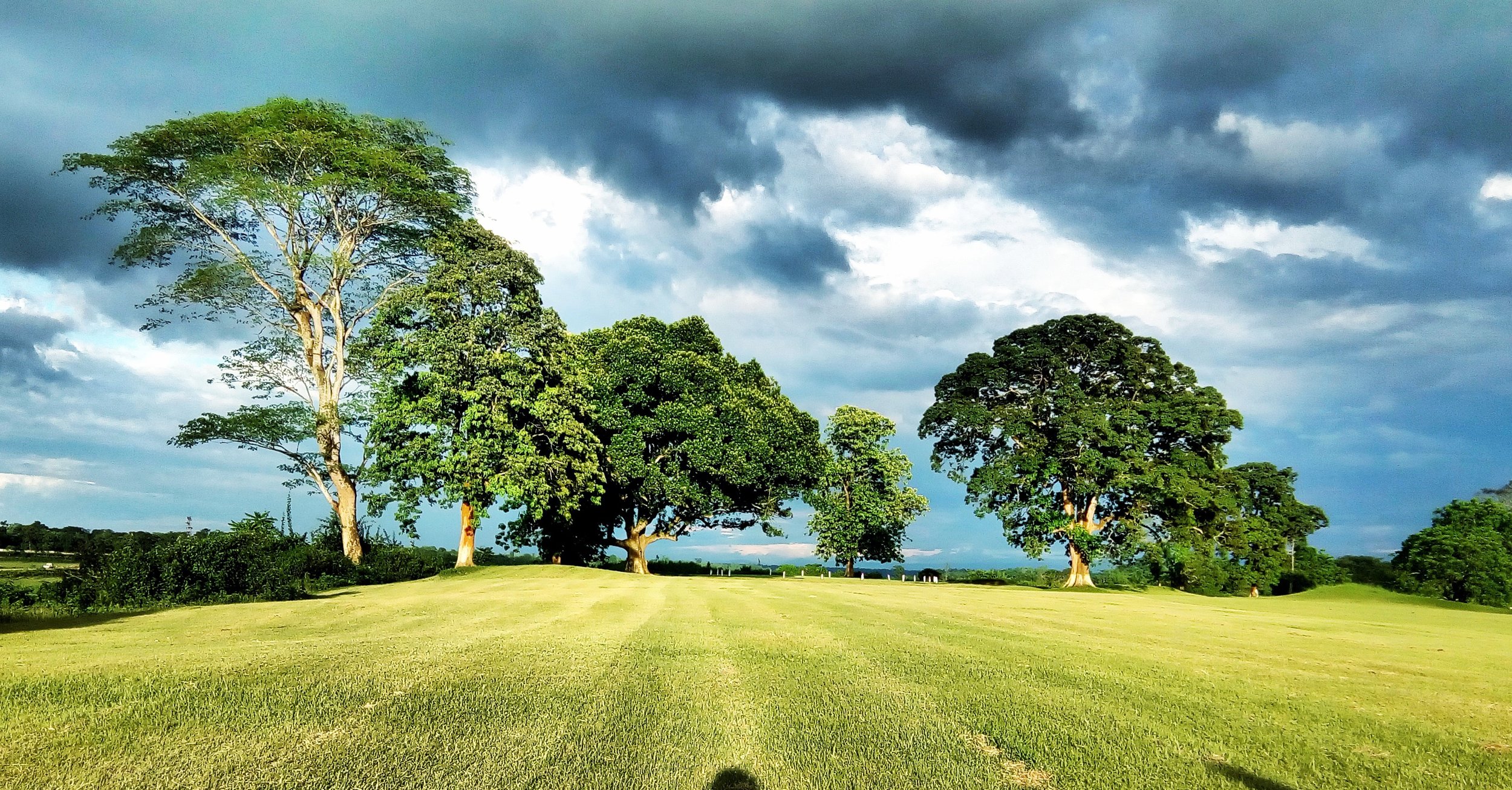Golf Stories: Lucy | Episode 172
On today’s episode, listener ‘Lucy’ shares her amazing story of survival, overcoming PTSD, and how golf helps her every single day.
On this episode of the podcast, listener 'Lucy' joins the show to share her courageous story of overcoming tragedy, surviving, and using golf to cope with every day struggles.
If you are interested in sharing your story on our show, please email Adam at golfunfiltered@gmail.com.
Golf Stories - Mike from THP | Episode 169
Adam welcomes a listener on the show to share his unique life story and how golf helps him get from one day to the next.
Adam welcomes a listener on the show, Mike from The Hackers Paradise forums, who shares his unique life story and how golf helps him get from one day to the next.
The Bag Room: Chapter One
“Many a golfer prefers a golf cart to a caddy because the cart cannot count, criticize or laugh” -Unknown
The first job of my life was the cause of what would become a horrible addiction that continues to consume me to this day. It takes all of my money, has caused me more pain than happiness, and I will do anything in my power to just get one more fix. The fact that “golf” is a four-letter word is likely no coincidence.
Driving through the south side of Alvarton, Illinois was far from enjoyable, and driving through Alvarton at 6:00am on a Saturday morning downright sucked. Even after I turned 16, the drive still sucked. You’d think I’d have gotten used to it by then. I had taken the job as a caddy at Alvarton Country Club at the age of 13 as a means to stay busy on the weekends and to make a few extra bucks during the summer. The job continued to consume my summers three years later, when I was finally able to drive myself to work every morning instead of begging my mother or father to do it. Socializing during the summer wasn’t exactly my favorite thing in the world, and my parents would constantly encourage me to “make something of myself” instead of "smoking the drugs and chasing the girls in town". Both they and I knew that it would have been a miracle if a girl was found in my bedroom instead of a cigarette pack, so I usually took their remarks with a grain of salt.
My hometown of Alvarton was a city founded on the backs and the sweat of steel workers from a century ago. While I did not always enjoy living in the city, Alvarton had a certain way to grow on you… much like a fungus grows on something left out in the sun. Over time I came to love my hometown and the people who called me “neighbor”. When you were from Alvarton, people around you knew it; I often believed that the citizens even had a different accent than the rest of the state. The children and teenagers of Alvarton were a special group of kids. We all thought that nobody could possibly know how tough it was to live in our town, however none of us wanted to ever admit we were from Alvarton. Alvarton had a certain negative mystery stigma with its neighbors. I was one of those teens the year I was introduced to the world of Alvarton Country Club.
Caddying had its perks at Alvarton C.C. The county club members usually tipped pretty well in addition to the normal fixed “looper” rates, and all employees were able to play for free on Mondays when the club was closed. The term “looper” was one that had never attempted to creep into my normal vocabulary prior to working at the country club; in fact, I had never heard the word before. I had been interested in golf from a rather early age thanks to my father and his friends, who would usually come by on the Sunday of a major to watch names like Norman, Lehman, or O’Meara grace the fairways of courses with the names of “Pebble”, “Carnoustie”, and “Augusta”.
The golf course was constructed in a traditional style of long, tree-lined fairways leading to tiny, well-guarded greens. The landscape of the course was a collection of hills, valleys, and elevation changes that appeared rather difficult to the rookie golfer; however, the course was actually easy to navigate once you became accustomed to it. The golf course maintenance crew took pride in the condition of the course and did everything it could to make Alvarton Country Club a “diamond in the rough” for the city; however, many citizens believed that the crew was simply making an awkward stretch of land more presentable. After all, covering a piece of crap with pomp and circumstance doesn’t take out the underlying stink. In comparison to professional-grade golf courses, Alvarton C.C. looked more like a dog track than a golf course worthy of the title “country club”.
Alvarton Country Club – which was originally opened in 1930 under the name of Union Country Club – was by no means a terrible golf course; in fact, it was the best course in the city. However, golf wasn’t exactly the biggest sport in Alvarton in terms of popularity. High school football, baseball, and women’s softball were larger draws to the citizens while golfers were a distant sub-group of people. The neighborhood high schools and junior college all feature golf teams, however you would be hard-pressed to find any mention of these teams in the city’s newspaper. As such, Alvarton Country Club was more popular for people outside of the city limits since the club was less-expensive than other clubs in the area.
Pulling into the empty parking lot I passed the obscenely large boulder with an engraving that read “Home of Alvarton Country Club.” It reminded me more of a grave marker than a welcome sign. The parking lot was a scene that I had become all too familiar with over the past few summers. Employees were told to park towards the back of the lot to allow for members to use the more favorable spots near the clubhouse, but no one ever followed this rule. My 1984 Chevy Blazer was quite the sight to behold for a country club, especially with the stylish rust spots surrounding each wheel well and a back window sticker that read “To All You Virgins: Thanks For Nothing”(which was a lie in itself, of course, since I was still a virgin to begin with). The head golf professional – Paul Brewer – pulled me aside one day and asked “what the hell was wrong with me” for having the sticker in his lot and made me agree to back-in to a spot by a tree-lined fairway so the members’ precious eyes wouldn’t be subjected to such filth.
Alvarton’s parking lot expanded from the front of the clubhouse and pro shop and deep into the property, ultimately leading onto an old gravel road. Employees were asked to park in the far south corner of the lot to allow for the closer spaces to be used by the membership. After parking in a spot not far from the entrance of the club (screw you, Mr. Brewer) I grabbed my towel and Gatorade bottle, opened my car door and walked to the caddy shack roughly 300 yards away.
The shack was positioned just to the west of the 18th hole’s greenside bunker off to the side of a small, grassy hill and looked like it had been built sometime in the 1930’s. From the layman’s viewpoint, the caddyshack looked more like a large wooden shed one might otherwise find in a neighbor’s lawn. There were two wooden benches underneath the shack’s wooden canopy, which rested on a 10x12 cement slab that had needed to be re-poured since last decade. Beside the benches were an old Pepsi vending machine that had never worked and a water bucket the caddies could use to keep their towels wet. Any decent caddy will keep half of his towel damp for the purpose of cleaning his player’s clubs and golf ball during the round. During my first loop for a member at the club I had neglected to remember this simple rule of caddy etiquette, which resulted in a very unhappy golfer with dirty clubs and an even unhappier (and unpaid) rookie caddy. Lesson learned. Finally, a telephone was located on the south wall of the shack which would serve as our notification when we were assigned to a golfer for the day.
The caddy program at Alvarton was started shortly after its opening. Neighborhood children would serve as caddies year after year, many of which eventually became rather decent and moved on to other country clubs and golf courses in the state. Alvarton was also a member of the Western Golf Association, which instituted an Evan’s Scholarship program. Caddies could apply and potentially receive a free-ride to a participating college or university. Over time, however, this program became less popular and fewer children became interested in this area of summer employment. Regardless, a few of the members at the club preferred to use caddies during their round and often paid their “loopers” rather handsomely.
Inside the caddy shack was a contraption that looked like a medieval torture device, complete with a large metal wheel, a steel water basin and an old rubber belt. This was the driving range ball washer, and it was the bane of every employee’s existence. The smells and sounds that would come out of this machine were beyond horrible, and heaven-forbid if any of the dirty water splashed on any part of your clothing. For a nerdy 16 year-old virgin like me, a hearty sprits of “Butthole Sewage No. 5” wasn’t exactly going to help with the ladies. Regardless, the caddies would sometimes be asked to help clean the range balls in the morning, especially when the lazy bag room attendants forgot to do so the night before.
Alvarton’s bag room was something of legend among the club employees. In other businesses that include a restaurant, the restaurant’s kitchen is always the brain of the operation. However this was not entirely the case at the country club. The waiters run the asylum from the foodservice angle, but Alvarton’s bag room employees were like waiters on crack (and in some cases, literally on crack) in terms of who could make or break a good or bad day for the customer. Furthermore, the bag room attendants and caddies had been locked in an ongoing war since the early days of Alvarton C.C. that would rival any story from a Hatfield or a McCoy.
The bag room was located in the basement/garage area of the massive golf course clubhouse and – like the room’s name implies – served as a storage unit for the members of the country club’s golf bags. Each bag was assigned a specific slot on a sliding shelving unit which the bag room employees would push back and forth throughout the day as new golfers arrived. Each two-tiered shelving unit was comprised of lettered rows and numbered slots that would keep the roughly 300 golf bags organized in an easily-accessible manner. These large racks were essentially wooden shelving units equipped with rollers on the base that slid along a metal track installed into the cement floor. Each shelving unit – or “row”, as they were referred to in the bag room – also featured a long, vertical handle by which you could push or pull the unit along the tracks. Working in the bag room was an hourly-wage position that was exceedingly simple, highly-enjoyable, and offered consistent pay a few days a week. At least that is what I was told by the one bag room attendant that I could stand: Billy Pirken.
Billy was opening that day for the bag room, which became evident with the garage door of the room was opened with a loud metallic rumble. From my vantage point in the caddy shack I could see roughly halfway into the bag room, which allowed me to see Billy climb into a golf cart (which were also kept in the back of the bag room) and begin driving down the paved cart path towards me. This was beyond standard operating procedure for notifying a caddy of an assigned golfer for the day, and despite my friendship with Billy, a bag room boy visiting the caddy shack usually meant one thing: you were in for a long day.
Billy arrived to the shack with a slight skid on the damp morning grass.
“How’s it going, Silky?” Billy asked. My last name – Silk – was probably one of my favorite attributes. Not many stupid nicknames could be made up based on a four-letter surname, and even my first name – Brian – was about as textbook as you could hope for. Being called ‘Silky’ was about the worst that could be contrived, and was one I decided to accept.
“Not much Billy. Got a loop for me?” I replied. I figured if I played it cool and didn’t show that I was anxious as to why a bag room employee was bothering me, the ridicule would be mild at best.
“Not today. Brewer wants you to come up to the bag room for the day. Carlos called in again this morning and Pro is pissed. Looks like you’ve been promoted.” Billy slapped the seat next to him in the cart. “Hop in.”
(Note: The above was originally published in my self-published book, "The Bag Room." Names have been changed to protect the privacy of those who can sue me.)
Military Golf Man's Unique Quest
John Zook is the type of guy you’d love to sit down and have a beer with at a neighborhood dive.
The retired Chicago military veteran is a joyful, boisterous fellow who, at well over six feet in height, towers over most anyone. Speaking to Zook is like conversing with a friend you’ve known for years despite having just met the man. He is friendly, engaging, and a gentleman to the core. It is truly evident that he is a man highly respected by his peers, both civilian and those in fatigues.
What is most interesting about Zook, however, is neither his demeanor nor his respect for our country. It is his undying commitment to complete a mission he started almost a decade ago: playing every military golf course in the United States.
It all started with a love for the game of golf that has stood the test of time and life experience. While he is hesitant to describe the sights and sounds of a career serving our country in the military, Zook attributes his engrained sense of discipline to his upbringing and experiences in the field.
“You might say I was trained to do something like this,” Zook told me during a recent phone conversation. “It takes a lot of patience and dedication because, heck, there are alot of courses to play.”
For those who don’t know, each branch of the United States Military – the Army, Navy, Air Force and Marines – lays claim to a number of golf courses on its respective military bases. While many of these courses are open to the public, the majority are reserved solely for military personnel. Consider it a perk that comes with the sacrifice.
How many of these military courses exist? At the time of this writing, there are roughly 185 different 18- or nine-hole courses across the country.
Playing nearly 200 golf courses is a tall order for any man to do by himself. Assisting Zook with fulfilling his quest are his long-time friends and ex- Chicago military brethren LTC Thomas Wilczak, COL Bill Logel and LTC Dennis Cassaza. Each man has either accompanied Zook on one of his many golf rounds or has played a military course as a single.
“As much as I would love to eventually see and play every course, having a team help with this goal makes it that much more achievable,” Zook acknowledged.
The mission began in 2010 in the form of a Chicago-to-Phoenix road trip. The group would ride through a number of military bases during the drive, including stops in Kentucky, Mississippi, Georgia, Florida, Louisiana, Texas, New Mexico and Arizona. Let’s just say they took the scenic route.
In 2011, the mission expanded to other areas of the Midwest. In the process of playing as much golf as possible, the group took in the sights of the country, including painted deserts, massive forests, plains and mountains.
Military golf courses haven’t always been seen in a positive light, however. A recent article published on the PGA.com website questioned the amount of taxpayer dollars that go into maintaining each course annually. Contrary to what the PGA article may lead you to believe, Zook assures me that no taxpayer dollars are ever used on any military golf course. If anything, veteran and family donations help keep these courses running. Many of the courses are located in areas of high land value, which can appear a bit pompous or arrogant, depending on your political views.
In the article, a Hawaii-based course – Kaneohe Klipper Golf Course, which Zook has yet to play – was profiled as a favorite leisure spot for President Obama. Yet another publication, Salon, expressed its disapproval of these expensive-to-maintain courses, calling them a “luxury that is out of reach for the ordinary American.” Of course, as the PGA article correctly points out, getting shot at in a combat zone is also something the “ordinary American” is unlikely to experience.
In the midst of a government shutdown, when focus on political spending is more evident now than ever before, many financial experts point to closing military golf courses as a “no-brainer” solution to recouping funds. It is true that many of these courses charge visitors greens fees lower than market value while continuing to pay for course maintenance at regular prices. At the end of the day, of course, the question becomes whether these courses are meant to produce revenue for the government or to serve as a benefit to the men and women of our military.
All politics aside, Zook’s quest is more a testament to one man’s love of a game that undoubtedly brought him serenity following a military career that was anything but relaxing. Each military golf course is equipped to offer these brave men and women everything they need to enjoy their afternoon, including golf club rentals, driving ranges, practice facilities, golf lessons (many complimentary) and extremely affordable greens fees (most range between $10-$40 for 18 holes).
Keeping track of where Zook and his team have played also proved to be a difficult task. With what started out as a “we’ll see how far we get” goal that turned into a multi-state journey, Zook knew that he needed an organized method of tracking his progress. To do so, Zook created a simple spreadsheet that listed every course in every state, including phone numbers, addresses and player exclusivity.
While the experience of visiting over 200 courses on military bases is rewarding enough, Zook and his team added a stipulation to their goal: to collect a golf ball, scorecard and ball marker coin from every course they visit.
“Chances are many of us would never see these courses again in our lifetime,” Zook explained. “At the very least, the golf balls could remind us of how far we’ve come.”
To date, the foursome has collected over 125 logoed golf balls, coins and scorecards during its quest.
Today, Zook spends most of his time at home enjoying time with his family and friends. While he and his team of ex-military golf fanatics still have a handful of courses yet to play – specifically those located throughout Alaska – Zook’s goal seems more realistic now than ever before.
“It has been a fun, wild ride up to this point,” he admitted. “None of us will ever forget it.”
(The above article was originally written by the author for the Back9Network, where it can also be found.)











